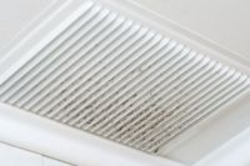Possible Solutions
Controlling the exposure to beryllium can be done through engineering controls, work practices, and personal protective equipment (PPE).
Engineering Controls
The use of engineering controls is the first line of defense in employee protection. Therefore, employers should provide appropriate engineering controls, such as isolating the source and using ventilation systems to control dust.

Employers also need to train their workers in work practices to ensure that dental laboratory technicians' exposures to beryllium are maintained below the current OSHA PELs.
Ventilation is one of the most important engineering controls available to the industrial hygienist and dentists for improving or maintaining the quality of the air in the occupational work environment. Broadly defined, ventilation is a method of controlling the environment with air flow.
Work Practices
The following work practices should be used to ensure that the exposures of dental laboratory technicians to beryllium are reduced:
- Substitute work practices that generate less dust, such as hand filing, for procedures that produce more dust, such as power grinding.
- Use local exhaust ventilation (hoods) properly to minimize the generation of dust and fumes when working with beryllium-containing alloys.
- Use HEPA vacuums to clean equipment and the floor around the work area.
- Prohibit the use of compressed air to clean parts or working surfaces.
- If a wet mop is used for cleaning, do not leave a film of dust on the floor after the water dries.
- Limit the number of workers who have access to areas where beryllium-containing alloys are being cast or fabricated.
- Use appropriate respiratory protection.
Knowledge Check Choose the best answer for the question.
1-5. What is the first line of defense in employee protection against chronic beryllium disease?
You forgot to answer the question!
